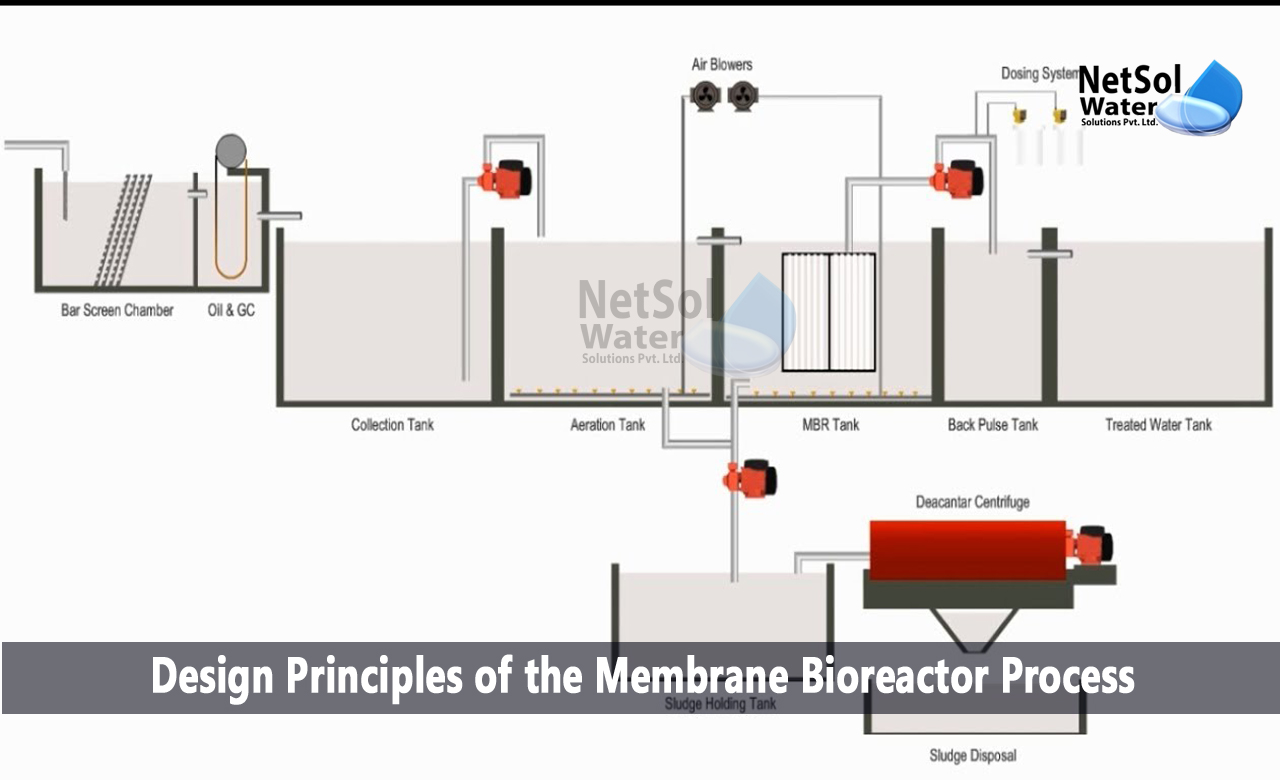Exploring the Environmental Impact of Membrane Bioreactor in Wastewater Treatment
Exploring the Environmental Impact of Membrane Bioreactor in Wastewater Treatment
Blog Article
Understanding Membrane Layer Bioreactors: The Future of Wastewater Therapy
Membrane layer bioreactors (MBRs) represent a significant development in the area of wastewater therapy, integrating biological procedures with innovative membrane filtering to boost effluent high quality. As international water scarcity and strict regulative structures come to be increasingly pressing problems, MBR modern technology offers a reliable response through its capability to lessen impact and maximize resource recovery.
What Are Membrane Bioreactors?

The core components of MBR systems include a bioreactor where microbial activity occurs and a membrane system that filters the combined alcohol. This twin capability makes it possible for the synchronised destruction of raw material and solid-liquid separation in a single step. MBRs can run in both immersed and outside setups, with submerged systems being much more common due to their compact style and operational effectiveness.
The fostering of MBR modern technology has actually obtained grip in numerous applications, ranging from metropolitan wastewater therapy to industrial effluent monitoring. MBRs are especially useful in scenarios where space is restricted or stringent effluent quality requirements need to be satisfied. By maintaining a high concentration of microorganisms within the bioreactor, MBRs improve the destruction of natural contaminants, consequently yielding greater therapy efficiencies compared to standard approaches.
Trick Benefits of MBR Innovation
The integration of biological treatment with membrane layer filtration in MBR systems supplies various benefits that set it in addition to conventional wastewater therapy techniques. Among the primary benefits is the boosted effluent quality. MBRs properly remove put on hold microorganisms and solids, attaining higher levels of filtration that fulfill strict discharge requirements and facilitate water reuse applications.

Another considerable benefit is the lowered sludge manufacturing. MBR systems generate less excess sludge, resulting in lower disposal expenses and a decline in ecological influence. The shut nature of the membrane layer system decreases the risk of smell emissions and improves total procedure control.
Last But Not Least, MBRs are functional and versatile, making them suitable for various wastewater types, including commercial and municipal sources. The capacity to incorporate with advanced therapy modern technologies further enhances their performance, making MBRs a promising solution for the future of wastewater monitoring.
Obstacles and Limitations of MBRs
While MBR modern technology supplies countless benefits, it likewise deals with a number of challenges and limitations that can impact its prevalent fostering. One considerable difficulty is the high capital and functional prices connected with MBR systems. The preliminary investment for membrane layer materials and the essential infrastructure can be substantial, making it much less obtainable for smaller sized sectors or communities.
Furthermore, membrane fouling continues to be a vital issue that can lessen system efficiency and increase upkeep demands. Fouling occurs when solids, raw material, or microbes collect on the membrane surface area, resulting in reduced leaks in the structure and needing regular cleansing or substitute.
Another limitation entails the complexity of the technology. MBR systems need competent personnel for operation and upkeep, which can be an obstacle in regions with minimal technical experience. The disposal of spent membrane layers offers environmental worries, as the products are recommended you read typically not eco-friendly and can contribute to squander monitoring challenges.
Lastly, while MBRs can successfully deal with a variety of wastewater, they may not appropriate for all applications, particularly those with high concentrations of fats, oils, and greases, requiring more research and development to attend to these constraints.
Applications of Membrane Layer Bioreactors
In various industries, membrane bioreactors (MBRs) have actually arised as a functional option for wastewater therapy (Membrane Bioreactor). Their applications extend municipal, industrial, and agricultural settings, showcasing their versatility and efficiency in varied atmospheres. In local wastewater therapy plants, MBRs dramatically boost effluent quality, allowing for water reuse and reducing the ecological influence of released wastewater
Industrially, MBRs are used in food and drink handling, textile manufacturing, and pharmaceutical production, where they efficiently treat high-strength waste streams. Their capability to handle varying loads and pop over here varying contaminant concentrations makes them particularly beneficial in these fields. In addition, MBRs promote the elimination of microorganisms, suspended solids, and raw material, adding to compliance with stringent discharge regulations.
In farming, MBRs are progressively made use of for dealing with agricultural runoff and animals wastewater, allowing the healing of nutrients for fertilizer manufacturing. They likewise aid in the therapy of greywater for irrigation, promoting lasting water administration practices.
The convenience of MBRs is more shown by their combination with other modern technologies, such as anaerobic food digestion and advanced oxidation procedures, improving total efficiency and resource recuperation in wastewater treatment systems.
The Future of Wastewater Therapy
Developments in technology and an expanding emphasis on sustainability are forming the future of wastewater therapy. Membrane bioreactors (MBRs) exhibit this shift by incorporating biological therapy processes with membrane layer filtration, causing premium effluent ideal for reuse. The pattern in the direction of circular economic situations is triggering centers to take on MBRs for their capability to recoup resources, such as water and nutrients, from wastewater.
Advancements in membrane materials and arrangement are enhancing the performance and longevity of MBR systems, minimizing functional costs and energy intake. Smart technology combination, including real-time surveillance and automated control systems, is further enhancing efficiency and enabling predictive upkeep, hence minimizing downtime.
Additionally, social assumptions and regulatory pressures are check my blog pushing sectors and municipalities to adopt more sustainable methods. Membrane Bioreactor. The change in the direction of decentralized wastewater treatment services is acquiring grip, permitting local therapy that reduces transportation prices and power usage
Conclusion
Membrane bioreactors (MBRs) represent a transformative method to wastewater treatment, integrating organic processes with advanced membrane innovation. The advantages of MBRs, including improved effluent high quality, reduced spatial requirements, and lower sludge production, position them as a viable solution amid growing urbanization and more stringent ecological laws. Regardless of existing obstacles, the ongoing advancement in membrane layer materials and operational techniques promises to boost the effectiveness and adoption of MBRs, ensuring their pivotal duty in the future of lasting wastewater administration.
Membrane bioreactors (MBRs) represent a significant technology in the area of wastewater treatment, integrating organic procedures with sophisticated membrane layer filtration to boost effluent high quality.Membrane layer bioreactors (MBRs) combine biological therapy procedures with membrane filtration to properly deal with wastewater.The combination of biological treatment with membrane purification in MBR systems uses various benefits that set it apart from conventional wastewater therapy techniques. Membrane bioreactors (MBRs) exhibit this shift by incorporating biological therapy procedures with membrane purification, resulting in premium effluent suitable for reuse.Membrane layer bioreactors (MBRs) represent a transformative strategy to wastewater treatment, incorporating biological procedures with sophisticated membrane layer innovation.
Report this page